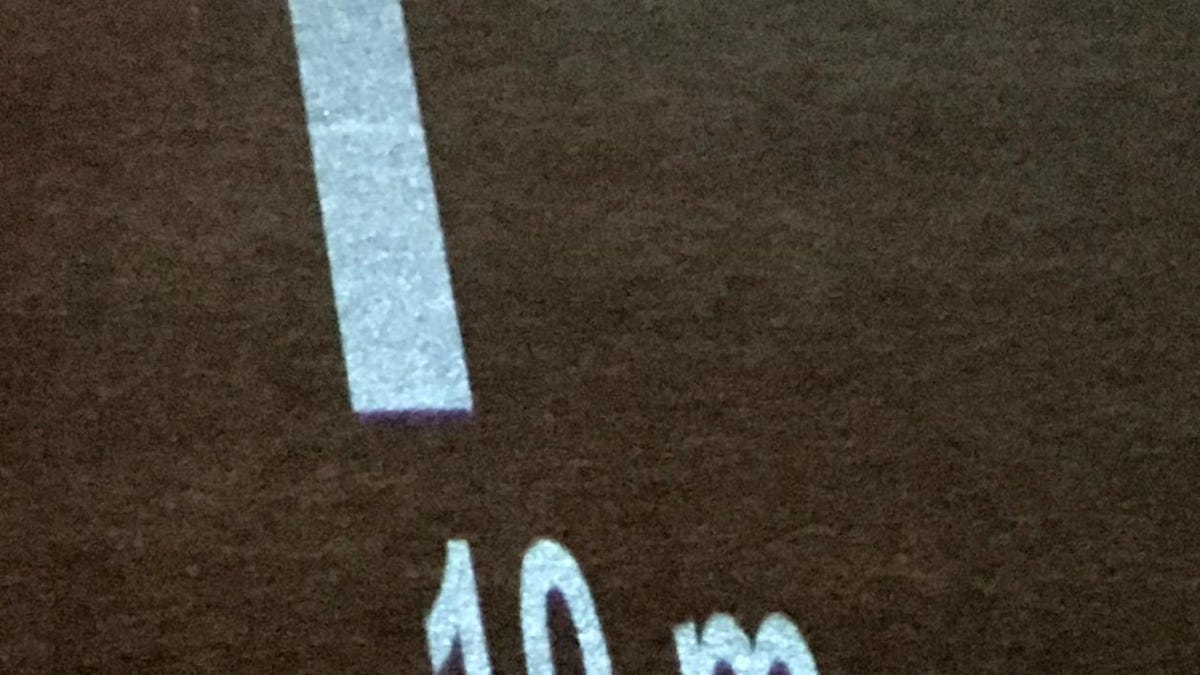Your headlights are about to get much smarter
At CES 2018, Texas Instruments showed how its DLP chip lets headlights dynamically change and project information on the road.

This route guidance image is actually a projection on the ground from Texas Instruments DLP headlight.
Typical headlights today use an array of LEDs projecting bright white light down the road, definitely an improvement over old incandescent light bulbs. At CES , Texas Instruments showed how it could take headlight technology even further, using its DLP chips to shape that light dynamically, turning on or off individual pixels in the beam.
With this technology, headlights could black out areas so as not to blind other drivers or pedestrians, and even paint information on the road, such as lane lines or route guidance.
In recent years, headlight technology has improved dramatically, going from incandescents to LEDs. BMW has even been developing laser headlights. This new technology is more energy efficient and creates a brighter, more defined light pattern. Current headlights can even adapt to light up a turn in the road based on the steering wheel angle.
Texas Instrument's DLP chip can make all of this much more flexible. In a demo unit at CES, light from an LED shines onto the chip, which reflects that light in front of the car. The chip can dynamically change which pixels from the light it reflects out in front of the car.
As part of the demonstration, Texas Instruments used a forward-looking camera to detect a pedestrian in front of the car. Tracking that pedestrian's location, the chip created pulled its illumination from a circle around the pedestrian's head, sparing the person from blinding light. This smart headlight could also paint a crosswalk on the road, inviting pedestrians to cross. That scenario would work for self-driving cars, which don't have the advantage of a human driver to assure pedestrians they can cross.
More useful to human drivers, the headlight technology could paint turn directions on the road in front of the car, although that type of projection might not be visible in bright sunlight. At night, it could serve to highlight lane lines, especially useful for dark roads with sharp turns.
There are a few hurdles before Texas Instruments' DLP technology finds its way into headlights, most notably government regulations. The Department of Transportation defines specifications for hardware that can be used in headlights, which might need to be updated to accommodate light that can transform dynamically.
Hyundai FCEV: We tackle 240 desert miles from LA to Vegas in Hyundai's new fuel cell prototype.
CES 2018: CNET's complete coverage of tech's biggest show.

